In the mid-nineteenth century the Chetco and Tututni Indians wore no clothing except a robe of deer skins dressed with the hair on.
The women wore a mat of grass or bark split into threads and fastened around their hips and hanging down to their knees, while the children were almost naked.
In a 1989 congressional hearing, Wilfred C. Wasson, former chairman of the Coquille Tribal Council, explained to why coastal Indians appeared to have adopted white ways so completely. According to Chairman Wasson: “As time went by our people found that by giving the outward appearance of being like white people they would be left alone. They wore white [style] clothing, cut their hair, spoke English and patterned tribal government after white organizations. It soon became second nature not to use Indian languages when white people were present and never to allow whites to see any portion of Indian religious practices.’” Similarly, another former chairman of the Coquille Tribal Council, James I. Metcalf, explained that in the years just after World War II, “A lot of Indians didn’t want to admit to being Indian. It was a lot easier to get a job if you weren’t. Indians were the last hired and first fired.

